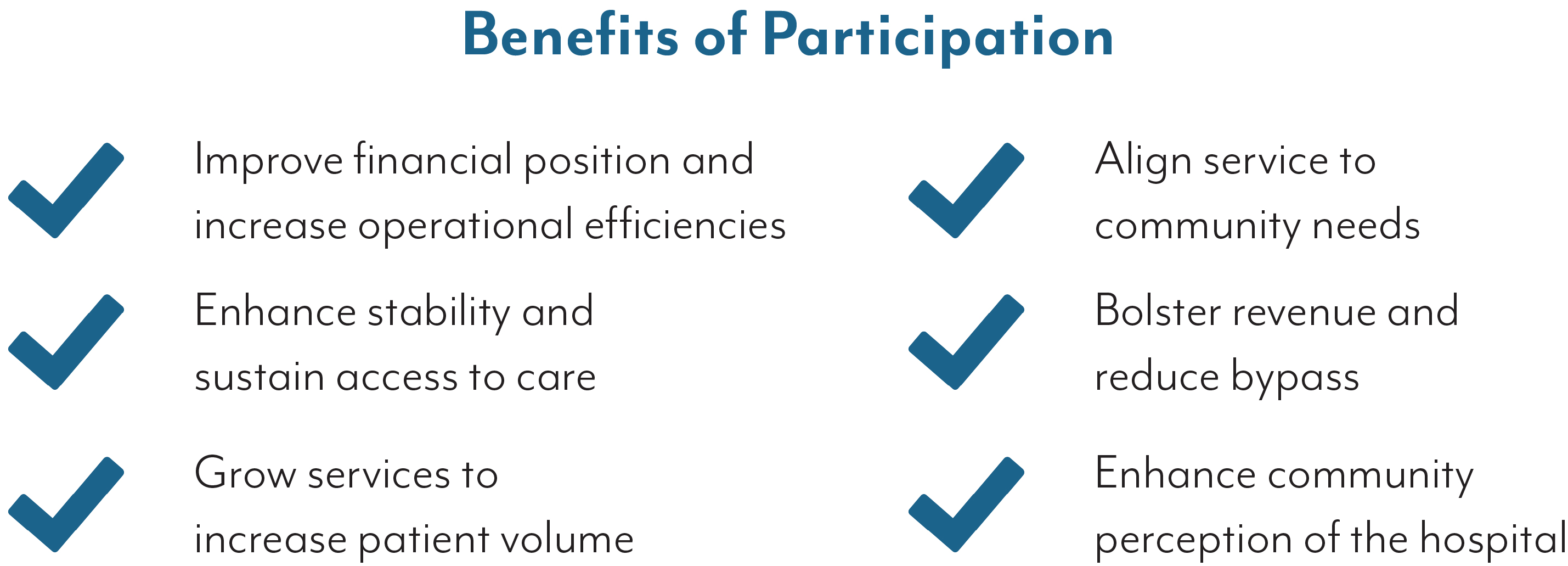
Rural Hospital Stabilization Program
RHSP helps rural hospitals across the country improve their financial stability by enhancing or expanding health care services that meet community needs and keep care close to home.
Rural hospitals are cornerstones in their communities.

They’re where millions of Americans go to receive care. They’re typically an economic engine — the top employer in their community. And they’re often viewed as anchor institutions, organizations that have an impact not just on health, but on the social and economic strength and stability of their community.
But the country’s more than 2,000 rural hospitals also face challenges, chief among them, financial sustainability, which is threatened by low patient volumes, high levels of uncompensated care and hospital bypass — all common in rural communities.
The Rural Hospital Stabilization Program (RHSP) is funded by the Health Resources and Services Administration’s Federal Office of Rural Health Policy and administered by the National Rural Health Resource Center. RHSP offers assistance to rural hospitals, at no cost to them, to help them improve their financial stability by enhancing or expanding health care services that meet community needs. This may include everything from pulmonary rehabilitation to outpatient behavioral health services to expanded primary care and keep care close to home.
The program’s ultimate goal is to strengthen rural health care delivery nationwide.
Comprehensive financial and operational assessments, education, one-on-one coaching, peer-to-peer sharing and other forms of customized assistance are provided by The Center’s subject matter experts and a team of nationally recognized consultants familiar with rural hospitals. This approach helps hospital leaders gain the tools and understanding necessary to adopt best practices and evidence-based models and enhance financial performance and operational efficiency.
Learn more about eligibility criteria
Hospitals participating in the cohort-style program work to identify clinical areas where the expansion or addition of services would help to ensure that care is available locally, and develop those service lines to bolster patient volume, optimize service utilization and improve cash flow.
Hospitals that meet program expectations and are selected for participation may receive financial support for operating and equipment costs for service line development and a Community Engagement Champion.






